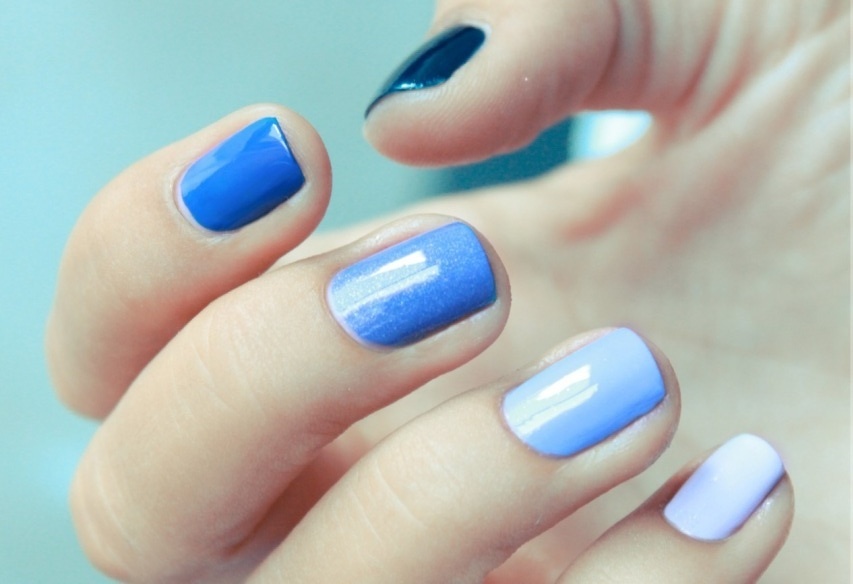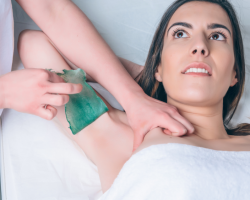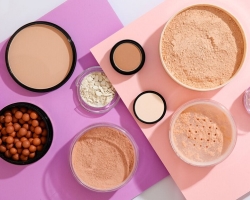In this article we will talk about gradient manicure. You will learn about his types, as well as get acquainted with the step -by -step instructions for recreating such a manicure at home.
Content
- Gradient manicure at home step by step
- How to make a gradient on the nails with varnish?
- How to make a gradient on the nails gel varnish?
- Gradient gel varnish brush
- Gradient gel varnish sponge
- Gradient manicure shellac
- Nail design gradient gel varnish
- Lacquer Grandian
- Video: Gradient manicure ombre
- Video: Festive manicure gradient
But did you know that at home you can make not only a manicure consisting of one tone, but also recreate beautiful smooth transitions of shades? The so -called gradient manicure or ombre appeared relatively recently, but gained frenzied popularity. Even children can give him a special charm that even children can learn the ombre technique. And the result is simply amazing - see for yourself.
Gradient manicure at home step by step
- First of all, you should stock up in advance with all the necessary materials and tools. You will need everything that you can remove the cuticle - forceps, an orange stick, scissors. Also prepare the base for manicure, varnishes, finish coating, sponge or cosmetic sponge, varnish removal, bias or cotton wands, a piece of polyethylene, foil or cardboard, a little water in the container

Important: be sure to purchase a varnish of some light pastel shade or saturatedly white-against the background of this coating, a gradient manicure will turn out to be clear and bright.
- Now you can proceed to the procedure for preparing nails. Gently give them the shape, adjust the length to your liking. Gradant design on long nails looks more spectacular, but even short ones can be transformed, especially visually, this type of staining lengthens the nails. In any case, they should be given a neat form. Make sure that there are no burrs, cut the cuticle

- It is time to degrease the nails and use the base coating. Do not neglect this stage - this will hold out the varnish much longer and, most importantly, the nails will be protected from the appearance of a yellowish tint

- Now apply a plain varnish, which we talked about above-some pastel or white color to the entire length of the nail plate. Pullify from the fact that this shade should be included in the conceived palette. Take your time - give such a coating how to dry

- At this stage, you can already use a sponge or sponge. Lower it into the water and squeeze it to such a state so that humidity is barely felt, otherwise the sponge will only absorb the varnish into itself

- Now make each varnish line on the sponge. In this case, the lines should fit each other, having a neat common border. However, there may be a larger number - for example, three. It all depends on how many tones you plan to get in the end
Important: take all the actions as quickly as possible, because the varnish dries quite quickly on its own, in addition, part of it is absorbed into the sponge. Therefore, you can apply several layers on each line

- It was time to print the nails in turn. And for this, you can choose different methods: either attach the sponge to the base of the nail, stretching it to the tip, or make vaporing movements over the entire surface. Keep in mind that frequent metabolic will give brightness to manicure
- Usually, after processing one nail, you need to re -apply the varnish on the sponge. However, if you do everything quickly, you can have time to print a few nails without re -painting the sponge. It is recommended before applying the nails on the nails, nevertheless, print it on a piece of cardboard in order to make sure everything suits
Important: if you want to visually make the nails longer, make the transition from light shades to dark, while the darkest should be located on the tip.

- As you noticed, prints remain from such vomiting movements around the nail. You still can’t do it without them, so do not worry, but it is better to carefully get rid of them. To do this, you will need a special corrective cosmetic pencil or a cotton wool, previously moistened in a liquid to relieve varnish coating
- However, it is possible to avoid undesirable contaminants-for this, before starting the manicure, simply swing the skin around the nail with clerical tape or treated with some kind of fat cream. All this will create a protective film, which will have the whole “blow”. However, there is a probability of sealing or gluing the site on the nail itself, so do everything neatly

- The final stage is the application of the finish varnish. This action will lead to the manicure shine, evenness, as well as the boundaries of shades will also be burned - they will become smoother and soft

How to make a gradient on the nails with varnish?
Correctly picking up shades is not such a simple task as it might seem to seem initially. They can be either one color scheme or contrasting. But if you still want a close palette and experience difficulties in the selection, there is an opportunity to purchase a special set of varnishes containing up to 7 shades. Be that as it may, the varnish of pastel colors or a rich white one needs to have - they are perfectly suitable as a basis.

Important: make sure that the varnishes have the same texture.
- Varnishes are completely optional to be applied to the sponge. As an alternative, you can smear them on the lid, a plastic film. In this case, strokes should fit each other, and the joints can be smeared with a toothpick or some sponge. After that, you can transfer everything to the nail plate
- There is one secret of applying varnish: so, if staining involves the transition of colors from light at the base to the dark on the tip, you need to make this dark in base. If, on the contrary, from dark to light - then the whole plate is initially applied to light. By the way, in this case, you can apply a non -base shade to the sponge and just print it on the tip of the nail



- You can evenly distribute the varnish along the plate due to the finish coating. By the way, thanks to him, the boundaries of shades become more blurry, and the surface of the nail itself is aligned
- Especially the latter is relevant if the varnish was applied with a sponge and pores are visible on the surface. The color stripes can be placed both horizontally and vertically - it all depends on the idea.
- At the same time, there is a little trick: so, if you want shades to turn out as much as possible, try to stir different colors of varnishes on some surface. White and black are especially good for this - they allow you to successfully recreate dark and light shades


Important: in order to create the most closely as possible shades in the palette, you should work, adding the same number of drops of varnish each time when mixed. For example, try to increase the number of drops by two over and over again - with this you will achieve a smooth color change. If you like this method, apply the second layer immediately after the first dries, and then begin to experiment again with mixing.

How to make a gradient on the nails gel varnish?
The coating of the nails with gel polish is almost the same as in the case of ordinary varnish, however, it is necessary to stock up on drying with an ultraviolet lamp, the power of which will be 36 watts. In addition, in order to remove the sticky layer, you need napkins that do not contain a pile. As soon as the necessary tools are purchased, you can start manicure:
- To get started, carefully treat the surface of the nail. You can do this with a special file, the abrasiveness of which is 80-100 gritt
- Now it is worth degreasing nails with bondex
- After that, you should use an ultraviolet lamp for drying
- The nails are covered with a gel base and again dried with a lamp
- Using a degree tool, you need to remove the sticky layer
- To improve clutch, it is recommended to file a nail
- Half the nail plate should be applied one color
- Now we apply a different color to the second half
- Gently paint the border with the first color so that it turns out to be smooth. It is recommended to do it with a small brush
- Use the lamp again
- Remove the sticky layer with a degreaser. This is worth it with neat vomiting movements with a cotton pad
- The final stage is the application of the top coating

Important: drying with an ultraviolet lamp should not exceed two minutes.

The undoubted advantages of gel polish include the fact that it dries very quickly and lasts about three weeks. At the same time, it does not break off in small pieces as in the case of ordinary varnish, does not even lose shine. Allergic reactions can also not be afraid. True, it is not recommended for weakened nails, while removing it requires a good soot.

Gradient gel varnish brush
It is advisable to pick up the brush flat with a semicircular or direct tip made of synthetic materials. The brush that you will apply the base is also suitable. So, the principle of operation with a similar brush is as follows:
- Paint half of the nail plate in one tone, then the second half to the other. Try to do the layers as thin as possible - it will be easier to shade
- Now take a flat brush and moisten it in the wedges so that it is barely wet. Until it has dried up, spend several times from the cuticle and tip. In this case, the brush should be as horizontally as possible to the surface of the nail - this will achieve smoothness when smoothing lines. After this procedure, you can dry the nail
- It was the turn of the second layer for each shade. And again, slightly with a damp brush, soften the lines
Important: between the stages of processing of the nail with a brush, wipe it with a napkin. Moisten in a clinker too with a napkin.

If for you, working with a flat brush seems difficult, but at the same time the technique of applying a brush attracts, you can try to start with the fan. The transitions, however, are not so smooth, but this method is quite easy:
- First of all, apply the base layer of the lightest shade. Dry it with a lamp
- Since the growing is not very smooth, it is advisable to independently create the third transitional shade. You can make it on a piece of foil, and apply to the middle of the nail plate between the two main shades
- Moisten in the clinker brush, after which mark it until you get the expected effect
- Dry the nail
- Repeat the procedure by creating a second layer of coating

Gradient gel varnish sponge
- The sponge is the most effective tool for creating a gradient manicure, since the transitions are so smooth that this will not work out even with all efforts. Above, we described the technique of applying a staining layer on the nails
- It is worth adding that the prints should be done carefully. As for their quantity on one nail, it all depends on what staining intensity will suit you - the brighter and more saturated you want to get a manicure, the more it is worth making the prints
- Apply the fixing composition immediately after painting the nail plate - this way you can avoid transferring the porous structure of the sponge to the nail. The disadvantage of this method is that before processing each nail, it will be necessary to apply varnish on the sponge each time, since a certain part of it will be absorbed quickly. However, the result is worth




Gradient manicure shellac
A mixture of gel and varnish - shellac - is gaining more and more popularity. If you are a fan of such a coating, you can try to make a gradient manicure with it. To do this, as in the case of gel polish, you will need a bottomless napkins and an ultraviolet lamp. The sequence is as follows:
- Degrease the nail plate and dry it
- You can apply shellac with a sponge - as we wrote above, this is the most optimal way to obtain smooth transitions. Only in this case it is first recommended to apply one shade near the cuticle or on the tip of the nail
- Dry with a lamp
- Now you can apply a second shade to the free part of the nail. At the same time, slightly posteriorly, the part already painted for the first time, thus going abroad
- Use the lamp again
- Now you can use the fastener that leveles the coating and will give shine
- Dry your nails again and remove the sticky layer with a degreaser

Important: be sure to process the nail with a buff - in this case, shellac will be attached well.
The manicure by shellac favorably differs from the usual in that which is much brighter, more neat and lasts longer. However, in the latter case, it is not entirely convenient if the manicure is tired and you want to try something new-such a coating is much more difficult.

Nail design gradient gel varnish
- As for the design, it all depends on your imagination. Improvisation is only welcome here. Even strips can have a different direction - not only horizontally, but also diagonally, vertically
- Colors can be either one palette or contrasting - it is only important to create a smooth transition. You can also create transitions not within one nail, but each nail is painted in a slightly darker or light shade than the previous
- Lovers of rhinestones, stickers, patterns will also be where to walk around - all these elements will perfectly fit into the design. Instead of a glossy fastener, you can try to use a matte - suddenly it turns out that you will like























Lacquer Grandian
So, what should be the varnish in order not to be afraid to damage their nails? After all, a gradient manicure will surely captivate you so much that you want to constantly experiment. First of all, it should contain a large percentage of cellulose, since it is a natural product. You do not need to go far for an example: cellulose is contained in many plants, as well as 90% cotton consists of it.
It helps to strengthen nails, and you will not have to worry about their strength. And for nutrition and moisture, the content of camphor oil is necessary. Concrete is saturated with marine minerals, which whitens the nails and contributes to their moisturizing. The brightness, brilliance and polishing effect provide silk amino acids. And, of course, you can not do without vitamins, especially without vitamin E, which helps to strengthen, supports a healthy state and beauty.
Important: what should not be in the composition of the varnish is Toluol formaldehyde, which destructively affects the nail plate. In other words, this is a carcinogenic substance that is better not to contact.

There is a small trick in order to preserve the varnish longer - you should shake it, ride between the fingers - then due to the occurrence of air bubbles inside, its service life will be longer. Keep the bottles in a warm place, but in no case in the light.
To make the manicure perfect, be sure to use the base for manicure and a quick drying tool along with varnish itself.

As you can see, to master a gradient manicure can do any fashionista. The effect is no worse than the salon. A little dexterity, accuracy and patience - and here your unique manicure is ready! Rejoice yourself and others, but do not forget about the acquisition of a quality product.







